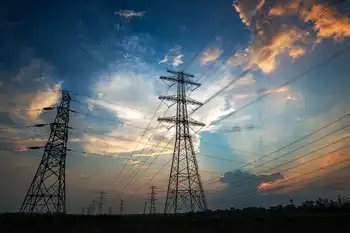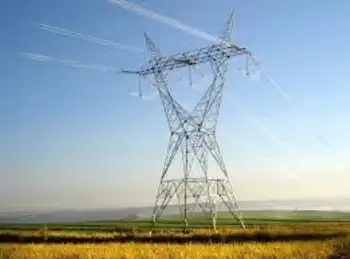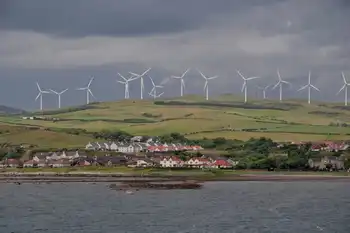Electric cars will need a lot more power
Bartlett's truck is powered by electricity, not gasoline. Bartlett, a mechanical engineer who lives in Cary, juices up his truck by plugging in. Instead of filling a gasoline tank, he recharges 1,600 pounds of batteries. His cost is equivalent to only about 60 cents a gallon to recharge.
Meanwhile his neighbors are paying $4 a gallon at the pump. But if simple math demonstrates the reason for a renewed interest in electric cars, another calculus suggests that electric cars could lead to a logistical nightmare.
"You don't want to build more power plants to accommodate all these electric vehicles coming online," said Alex Huang, director of the N.C. State's new electric car research project. "If (electric cars)... cause blackouts, either you have to build new power plants, or you have to shut down somebody."
Utilities in the state are working with N.C. State University's newly created Advanced Transportation Energy Center to avert an energy crisis that potentially looms in the plug-in hybrid bonanza.
For decades, electric cars had been hobbled by a major drawback that made them impractical: a short driving range rarely exceeding 50 miles. Hybrid technology, combining an electric motor with a gasoline engine, gave the cars unlimited range.
Now a new generation of electric cars - plug-in hybrids - are about to hit the market.
They boost power storage to deliver more than 100 miles a gallon. Electric cars have another plus: By drawing their energy from power plants, electric cars reduce overall pollution and cut greenhouse gas emissions. Major automakers expect to introduce the first commercial plug-in electric models in two years.
Some predict that half of all new cars sold in about a quarter-century could be plug-in electric vehicles. But to gain wide acceptance, electric cars will need access to electricity, and plenty of it.
Some will recharge from a standard 110- volt outlet, draining as much power as about one-and-a-half refrigerators. But electric cars that require 220-volt outlets, the kind used by electric stoves and clothes dryers, will drain as much power as a central air conditioner.
That won't be a problem as long as the cars recharge at night, when energy demand is low and utilities have cheap power to spare. The U.S. Department of Energy has said that even if all the nation's cars switched from gas to electricity, power plants could fuel 84 percent of the cars during off-peak hours, mostly at night.
But if plug-in hybrids catch on, they are expect to trigger an appetite for power on demand, and businesses are likely to oblige by providing power outlets for convenient recharging.
A study by the Department of Energy's Oak Ridge National Laboratory said in March that the worst-case scenario would require the construction of 160 power plants nationwide if all plug-in hybrids recharged in the daytime in 2030, when the plug-ins are expected to be ubiquitous.
"You've got to have incentives in place to delay charging until nighttime," said Stan Hadley a senior researcher at the Oak Ridge laboratory. "Otherwise people will charge whenever they have the opportunity."
Electric cars represent a lucrative business opportunity that would boost utilities' revenue. To maximize those sales, utilities would want customers to recharge at night, when the most efficient power plants are generating the cheapest energy.
This year, Progress Energy and Duke Energy agreed to fund research and testing by NCSU's electric-auto research project. The Advanced Transportation Energy Center is budgeted for $5 million over five years, with half coming from the state and the other half from the two utilities.
N.C. State has already done some electric-vehicle research, mainly testing the durability and longevity of batteries. The transportation research center will join the race to develop lightweight battery packs with a driving capacity of 100 miles on one charge.
But preventing power grid jams will require restricting customer access to recharging during times of peak demand. The simplest solution is a timer that won't let people recharge cars until sometime after 9 p.m. in the summer, when air conditioners aren't working as hard.
A more advanced alternative would be discounted rates for off-peak use and premium prices for on-peak charging.
Utilities in California have offered such discounts for more than a decade. More advanced options include "smart meters" that communicate with the vehicle, remotely activating the recharging function when the utility has spare power.
Future concepts include electric cars that store power in batteries, then allow reselling the power back to the utilities in times of extreme peak demand. "This will be a concentrated effort that will focus on grid management," Huang said of the state project.
Bartlett's electric pickup truck is not a plug-in hybrid. It's an all-electric limited production utility service vehicle from 1994 that has a range of about 50 to 70 miles on one charge. Bartlett recharges his truck at home while he sleeps. He also recharges during the day while he works, using an outdoor outlet provided by his employer, Cisco Systems.
Don Crohan, also of Cary, drives a 1986 Fiero that has been retrofitted as an all-electric car. Lacking the backup gasoline engine of a hybrid, Crohan's Fiero does without air conditioning to conserve electricity.
"It just uses too much power," he said. The Fiero is both a hobbyist's indulgence and a political manifesto.
"There's no wires, no hoses, no belts, no exhaust system," said Crohan, a psychologist. "I'm not only keeping my own expenses down," he said, "but I'm not sending money overseas to countries that have a negative agenda on my country."
California, a mecca for electric cars and alternative energy, has long experimented with recharging options.
Some power companies offer discounts called Electric Vehicle Rates. San Diego Gas & Electric has offered EV rates for more than a decade. The lowest rate is 11.5 cents a kilowatt hour at night, about 50 percent cheaper than the standard residential rate. The costliest rate is more than double: 25.5 cents an hour during peak demand in the summer.
California's power rates are among the steepest in the nation, and the discount rate there is more than households pay in North Carolina. If Progress Energy offered an off-peak rate at a discount, it would be less than 9 cents a kilowatt hour, the utility's standard residential rate.
Here are the three basic designs of electric cars:
ALL-ELECTRIC: Developed more than a century ago, these vehicles store all their power in on-board batteries. They recharge by plugging into a standard wall outlet. Some can recharge from solar photovoltaic panels. For years, all-electric models were limited by a short range, usually about 40 miles.
HYBRID: Only a decade old, hybrids rely on a backup gasoline-powered engine to boost the electric motor. These models recharge themselves as they drive through "regenerative" braking. They are not limited in driving range because they switch to a gasoline motor when batteries run down.
PLUG-IN HYBRID: Currently available as custom conversions only, these models will become commercially available in 2010. An expanded battery capacity lets the electric motor do most of the work, which has the effect of doubling the car's gasoline mileage, sometimes surpassing 100 miles per gallon. Many plug-ins can recharge from a household wall outlet, but some require a 220-volt outlet, like those needed by clothes dryers and electric stoves.
In the future, when public access to recharging outlets is widely available, drivers will likely recharge when they park at work or during shopping. These models are expected to gain commercial acceptance, especially if gas prices remain high.
Related News

Japan's power demand hit by coronavirus outbreak: industry head
TOKYO - Japan's power demand has been hit by a slowdown in industrial activity due to the coronavirus outbreak, Japanese utilities federation's head said on Friday, without giving specific figures.
"We are closely watching development of the pandemic as further reduction in corporate and economic activities would lead to serious impacts," Satoru Katsuno, the chairman of Japan's federation of electric utilities and president of Chubu Electric Power Co Inc, told a news conference.





